The Fjällräven Abisko Dome 2 is a freestanding four-season dome tent for two persons. I have been testing it for almost a year in all weather circumstances. Read the review or watch the video!
- Weight 3404.06 grams (specified weight 3160 gr).
- Packsize 20 x 47
- Price € 899.95
The Fjällräven Abisko Dome 2 is a free-standing fourseason dome tent for two persons. On my precision scale I measured the weight at 3404.06 grams and that is a little more than the 3160 grams that Fjällräven states. The weight can be divided into an inner tent of 783.5 grams, an outer tent of 1346.1 grams, 3 poles of 848.6 grams, a bag of pegs (18 pieces) of 219.5 grams and finally the stuff bag of 189.5 grams. For the Fjällräven Abisko Dome 2 there is also a footprint for sale (€ 104.95) and with a weight of 480 grams (specified by Fjällräven), but I have not tested it.
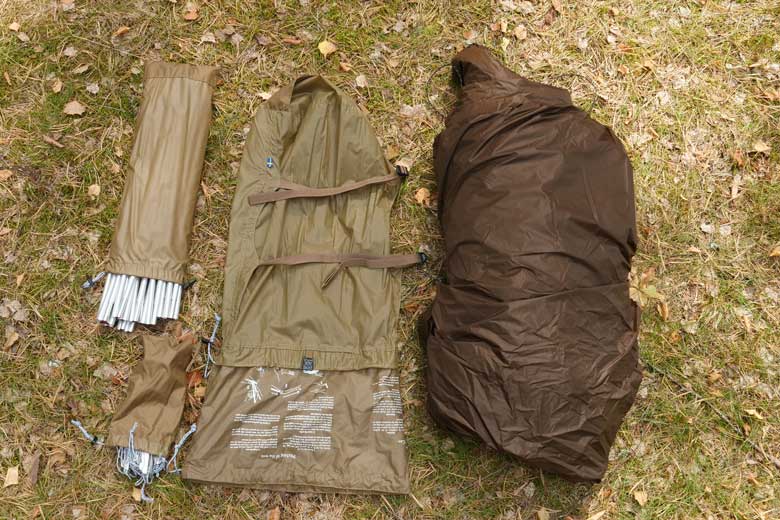
Intended use
The total weight of 3400 grams is fine for a fourseason tent and it is also perfectly suited for the two persons that want to go camping the year around with a backpack, bicycle or a winter hike with a pulka (snowsled).
Stuff bag
The stuff bag of the Abikso is spacious so you never have a problem stuffing the tent in it. Once the tent is in the bag, two compression straps help you to make it more compact. The poles can be stuffed in the bag, but also on the outside under the two compression straps. A clip on the pole bag and on the stuff bag prevents from losing the poles along the way. On the open side the stuff bag has a kind of funnel and in this extra space you can also store a ground sheet. In the stuff bag you will also find a repair pole, a pole repair sleeve, some fabric and mesh, a tube of Seamseal and needle and thread. Fjällräven is one of the few tent manufacturers that supplies a decent repair kit to the tent. A simple manual has been printed on the stuff bag itself.
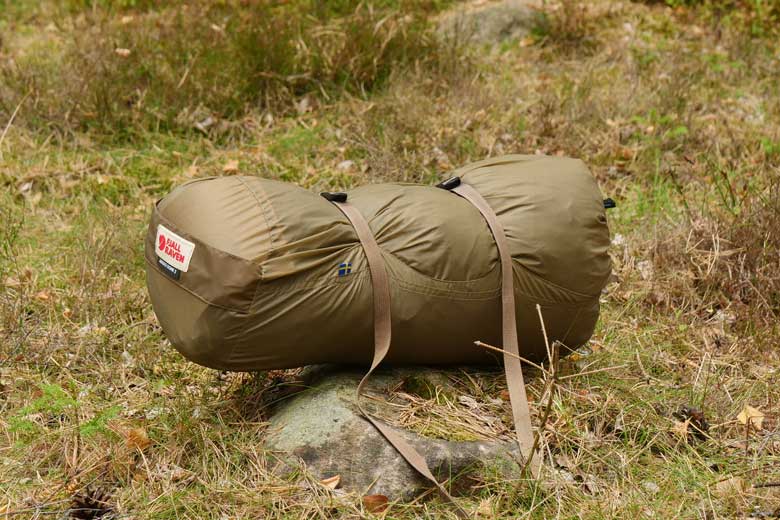
Materials
Lightweight and decent; this is almost a Mission Impossible. Yet the Swedes do something clever with the materials that they use. The outer tent is made of a combination of thin 20D* Triple Ripstop polyamide while the 15 cm ‘snowskirt’ that touches the ground is made of thicker 40D Triple Ripstop polyamide. Lightweight where light can be; thick where it needs to be strong. To make the fabric watertight, it is treated with a silicone coating on the inside and outside. The seams are therefore not taped, because that is not possible with silicone-coated fabrics**. If a seam leaks just apply a bit the supplied Seamseal to close the hole.
The inner tent is made of the thinner 15D Ripstop polyamide. The fabric is water-repellent, so that condensation drops – which can occasionally fall off the inside of f the outer tent – roll off the fabric off the innertent. Fjällräven uses 20D polyester mesh to prevent mosquitoes or insects from entering the tent. The groundsheet is made of thick 40D ripstop polyamide with a polyurethane coating that makes it waterproof.
* 20D stands for the material thickness (D = Denier). In the world of lightweight tents, a 15-20 Denier fabric is the trend. Ripstop means that if there is a small hole or tear in the fabric, the material will not continue to rip.
** Vaude is the only tent manufacturer that produces tents with a silicon fabric that is provided with a tape.
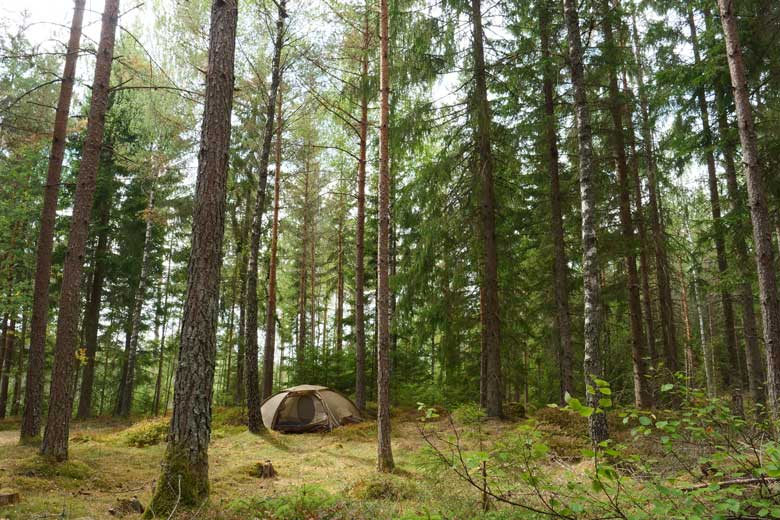
Aluminium poles and pegs
The Fjällräven Abisko Dome 2 is a fully symmetrical tent, so the three poles are of equal length. The poles are produced by the Korean poles manufacturer DAC and they are DAC Featherlite NSL Green poles of 10 mm diameter. DAC also supplies the aluminium pegs. There are 18 and that is enough to set up the tent and use off all the guy lines. The pegs perform well in many different sorts off grounds – soil, gras, and rocky surfaces with cracks – and are very solid.
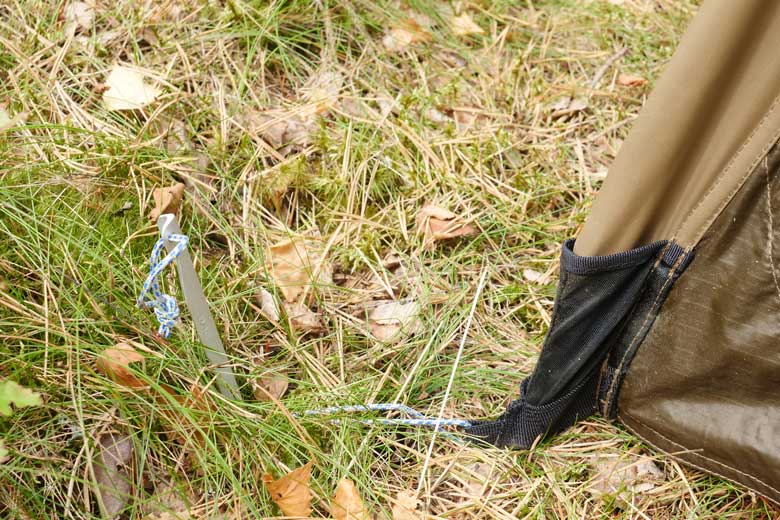
Pitching
Pitching the Fjällräven Abisko Dome 2 is very easy and within 5 to 15 minutes it’s pitched. The time depends on whether the inner tent is already in the outer tent or if you still have to place it. Pitching is a matter of laying out the tent, sliding poles into the pole sleeves and raising the tent by putting tension on the poles and get the end off the poles in the pole holder. There are a few things that you should pay extra attention to:
The pole sleeves are closed at one end and at the other end there is a plastic pole holder. Pay attention that the pole is actually in the reinforced part at the closed end, otherwise you can press the pole through the sleeve-fabric during tensioning.
To make the tent free standing there are wires between the corners off the tent and if you put a pole under it you will not be able to upright the tent.
The same applies to the many guy lines. Make sure that these are really free. Pack the tent neatly when you break up. The guy lines have a tendency to get tangled together and that is inconvenient when you want to pitch the tent quickly.
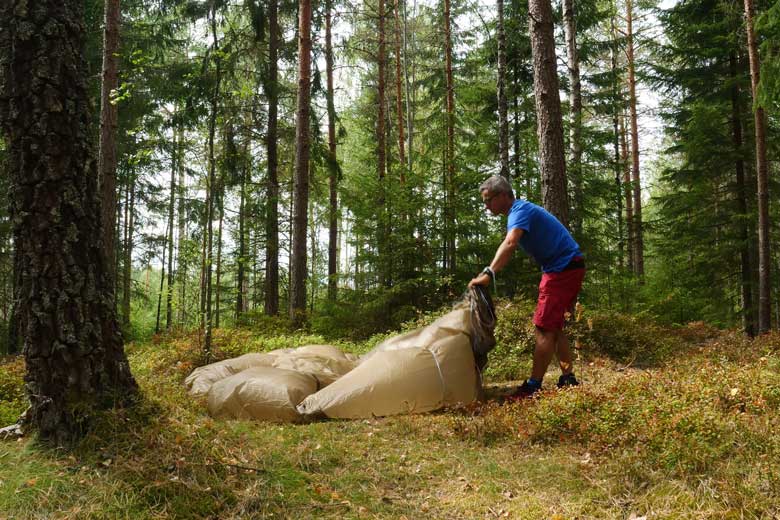
Pole sleeves
That the Fjällräven Abisko Dome 2 is a real four-season tent, prove the pole sleeves. The pole sleeves are extra spacious so you can put in an extra set off poles. This makes the already strong dome construction even more resistant to a lot of wind and especially a thick layer of snow. An extra set of poles – Dome 2 pole kit – costs € 204.95.
The pole sleeves themselves are not closed from one side of the tent to the other. In the middle – the highest point – Fjäll opened the pole sleeves. The advantage of this is that you can insert the poles into the sleeves much faster and easier. To make no mistake, the pole sleeves at the top are still colour-coded. At the side where the pole goes in the plastic pole holder, there is a good strap for (un)tensioning the flysheet.
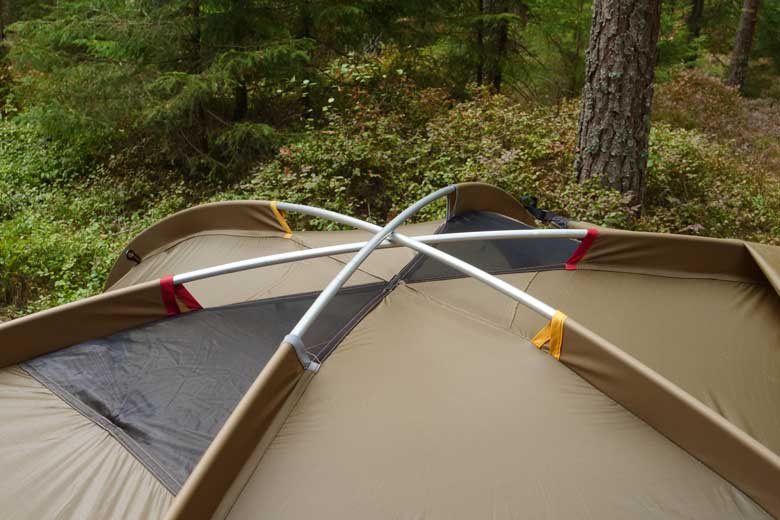
Cap
In the top of the fly, the Fjällräven Abisko Dome 2 has two ventilation openings. To protect these from rain, Fjällräven made a kind of cap over the dome. This cap can be taken off – handy in good weather for a lot of ventilation – but only fits in one way and in order to guide it in the right direction, two attachment points are colour-coded.
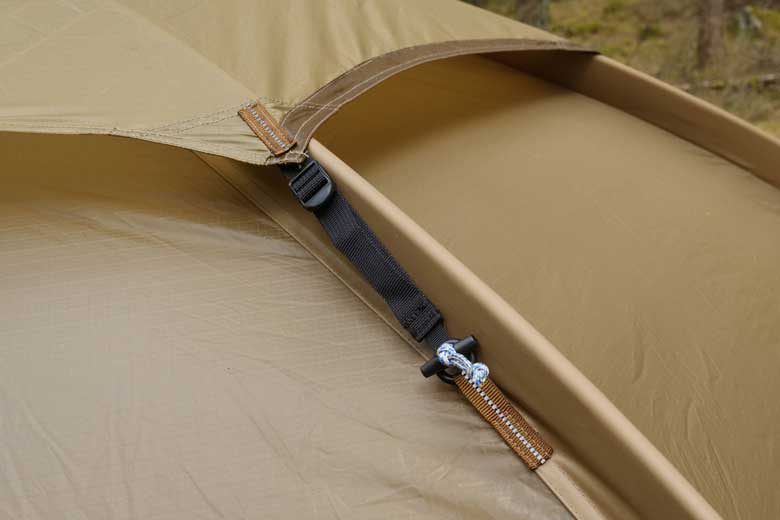
Fjällräven Abisko Dome 2 free-standing
As mentioned above, the Fjällräven Abisko Dome 2 is a free-standing dome tent. Free-standing or self-supporting means that no pegs or guy lines are needed to keep him upright. The nice thing about this is that you can now pick it up and move the whole tent to find a spot that is level and without bumps for a good night’s sleep. If there is not too much wind, the use off pegs is not even necessary; with some weight in the tent it stays in place.
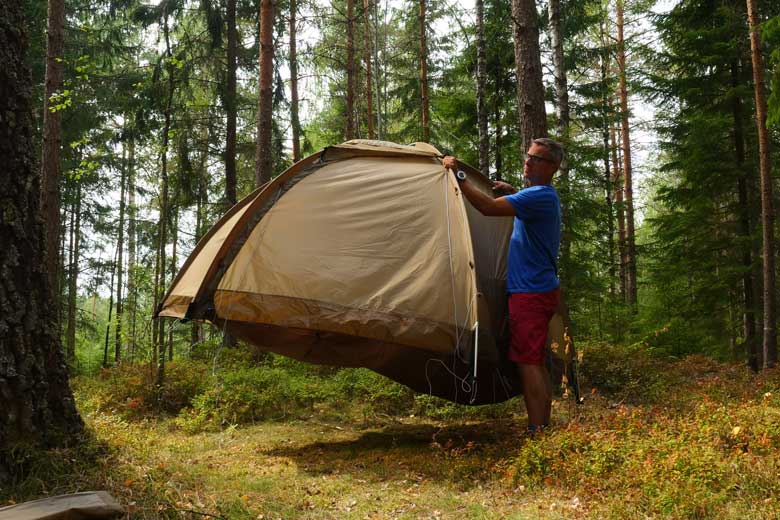
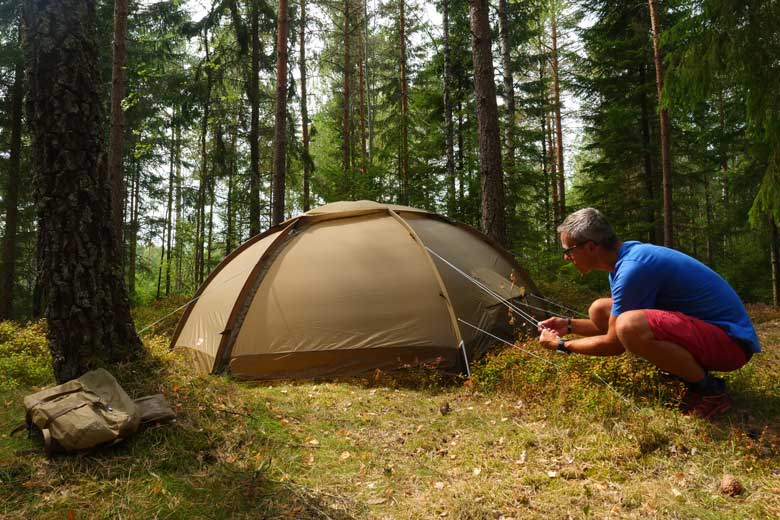
Removable inner tent
Upon purchase, the Abisko is delivered with the inner tent fixed in the outer tent. In wet weather it is sometimes smart to first pack your gear and then – protected by the outer tent – the inner tent. This way you can pack it as dry as possible. The only thing that is really wet to take with you is the outer tent. This not only saves weight (no wet inner tent) and drying time, but a wet inner tent is colder because it extracts heat from the environment during drying. So remove the inner tent first in wet weather. The inner tent is easy to clip in again as long as you start with the two colour coded attachment points.
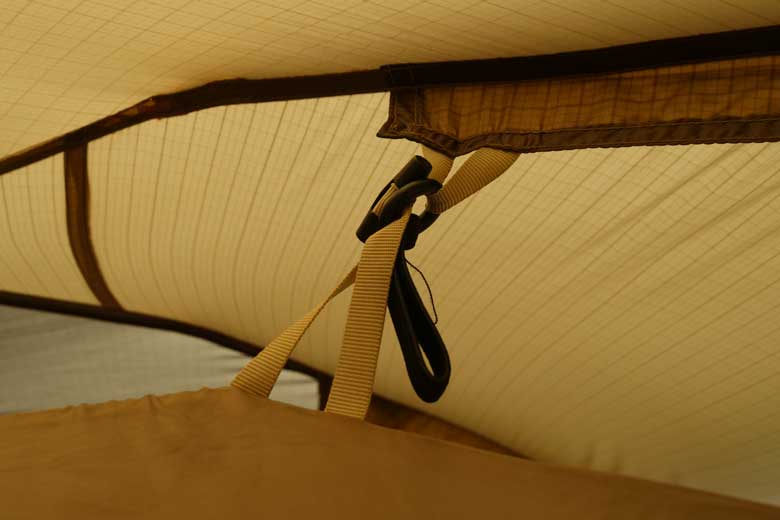
Innertent space
With a width of 130 cm and a length of 220 cm, the inner tent is spacious enough for two tall persons. Also the height of 100 cm may is fine. Even when you are tall, you can sit upright. A limiting factor is the gearloft under the ceiling, which shrinks the height to 90 cm. The gearloft is removable although you will miss that handy place to dry your wet socks or where you can put a headlight as lighting. The inner tent also has for 4 storage pockets on al corners. The doors of the inner tent are double: a closed no see trough door and a mesh door.
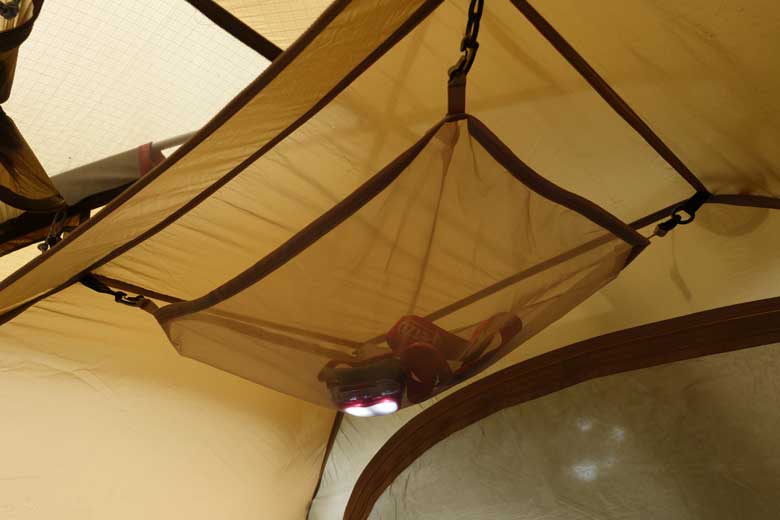
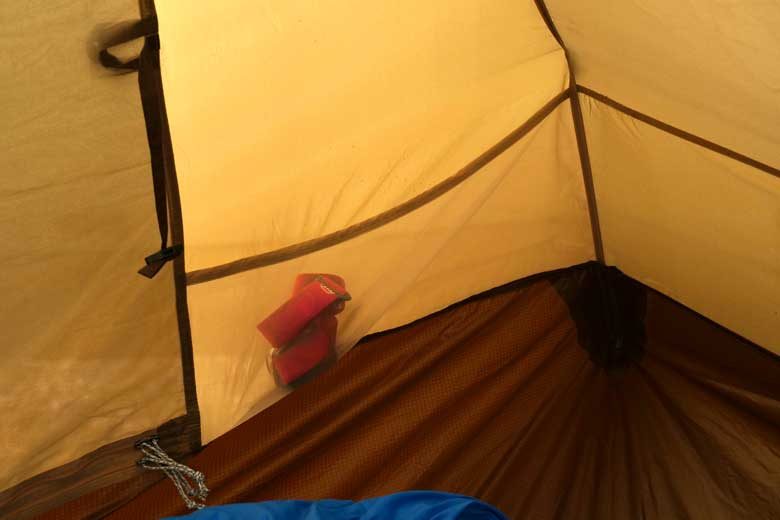
Awnings
The Abisko is a symmetrical dome and so the Fjällräven Abisko Dome 2 has two equal awnings. They are approx. 80 to 85 cm deep. Under the canopy you can easily store a large backpack or a pair of cycle panniers. In addition, the vestibules are also great for cooking free of wind. The Abisko entrances are quite sheltered: they don’t really suffer from raining in. And if the wind is blowing very hard you can always close the doors for the half for more shelter.
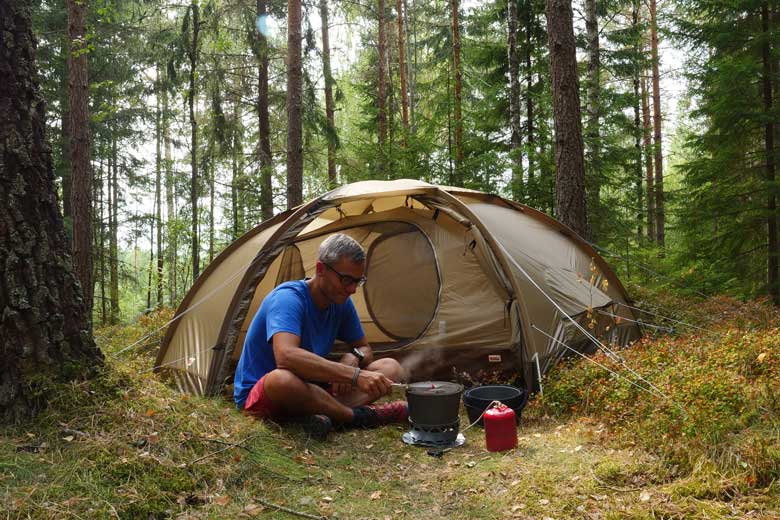
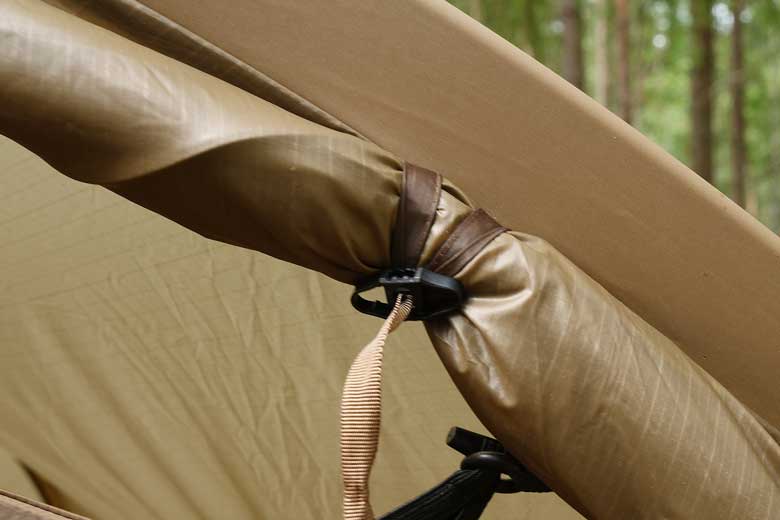
Weather resistant
I tested the tent during a long summer holiday in Sweden, with foul weather in the Netherlands and in the Alps in the snow. The Fjällräven Abisko Dome 2 has proved to be a real all-weather proof four-season tent. The outer fabric runs all the way to the ground ensuring that you are well sheltered fro wind and rain. The tent and the groundsheet have proven to be totally waterproof and I have not been able to detect any leakage on the seams. The guy lines are double – every guy line has two fixed points on the tent – making the Abisko very resistant to strong winds. The guy lines are also reflective and that is very nice if you need to go out in the night for a wee and want to find your tent back again fast. Something that you have to take into account is the siliconized fly-fabric that is reasonably sensitive to temperature changes. Check the tension on the fly regularly.
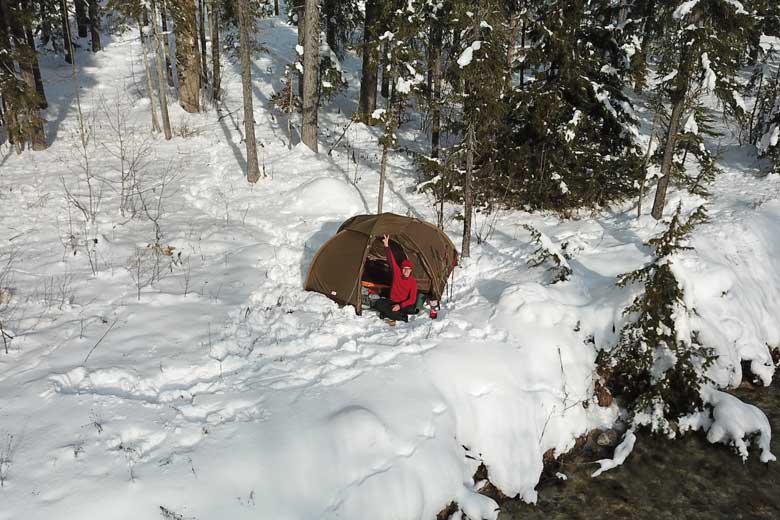
Wildcat or squirrel
I write ‘totally waterproof’ above. I went for a walk on one of the camping spots in Sweden. While I was away, a wild cat, a squirrel or another small animal with sharp nails tried to get into the tent. The nails have made small holes in the outer and inner fabric. In fact, it walked over the inner tent from one site to the other (watch the video!). These small holes in the outer fabric can be closed with a little rubbing of the fabric between two fingers. Ripstop fabric also proves its advantages here: nowhere has it been torn. I repaired one spot with the supplied repair kit. What I am saying is: shit happens, but the tent is not lost due to the chosen of materials and repair kit.
Ventilation
A four-season tent must have good ventilation-possibilities. Not only ventilation with warm weather but also in cold weather where the difference between the warmth inside and the cold outside ensures condensation. The Abisko has two ventilation openings in the top off the dome and two enormous airscoops at both end of the inner and outer tent. All openings can be closed with anti-mosquito mesh. The openings in the top of the flysheet can only be operated from the vestibule. The openings on the sides can be used to scoop snow between the inner and outer tent. Handy for cooking! The Abisko does not have a real snowscooptunnels as you find on real expedition tents.
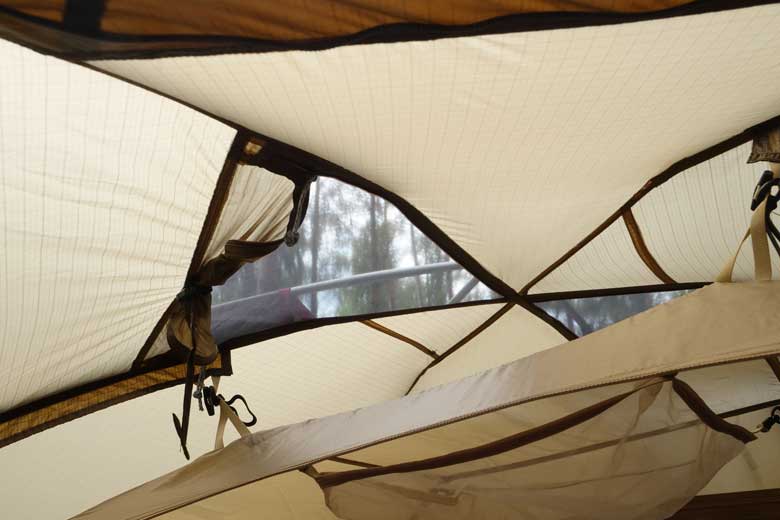
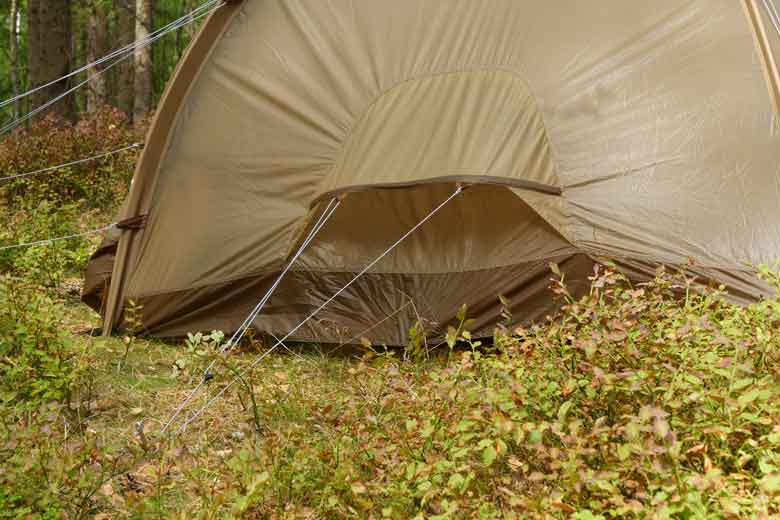
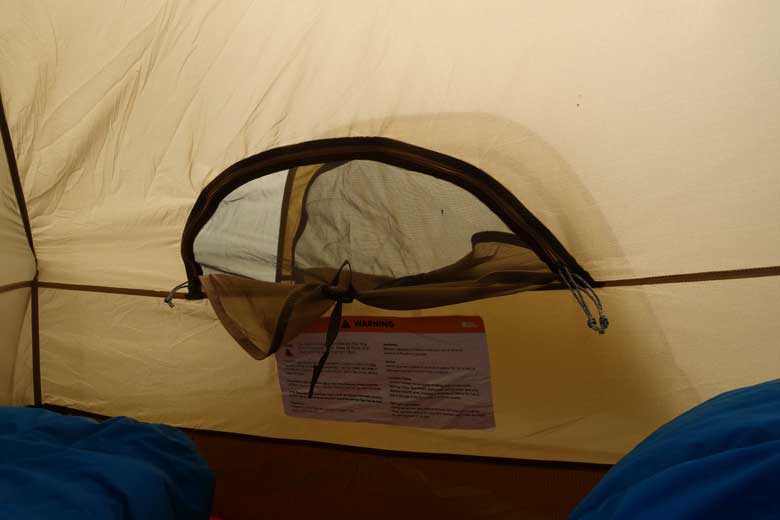
Condensation
I already mentioned the word condensation. Although the Fjällräven Abisko Dome 2 is equipped with so-called high-low ventilation – the chimney effect – the tent suffers from condensation on the inside with a large difference between inside and outside temperature. But name me one modern lightweight tent that does not have this issue…. Purchasing the footprint – I have tested the tent without – makes a lot of difference here. For example you no longer have condensation from grass that breaths.
Conclusion
The Fjällräven Abisko Dome 2 is a beautiful and well-designed self-supporting dome tent. The choice of a thin fabric in combination with thicker fabric where the tent touches the ground is super. The tent is completely symmetrical which makes it very easy to pitch. As long as you packed the tent neatly the last time you used it. Otherwise you can have quite a bit of work on untangling the guy lines first. A guy line garage on the tent would be a big improvement. The tent is very windproof and is waterproof. The possibility to use an extra pole set in the pole sleeves is a bonus for camping in foul weather or winter snow conditions. The inner tent is spacious enough for two large adults; the awnings are large enough to store backpacks or panniers. The price of the Fjällräven Abisko Dome 2 is € 899.95. And I don’t consider that to be an absurdly high price for this kind a tent that will last many years.
Information www.fjallraven.com
Need a bigger tent? Read of view my review of the Fjällräven Keb Dome 3
